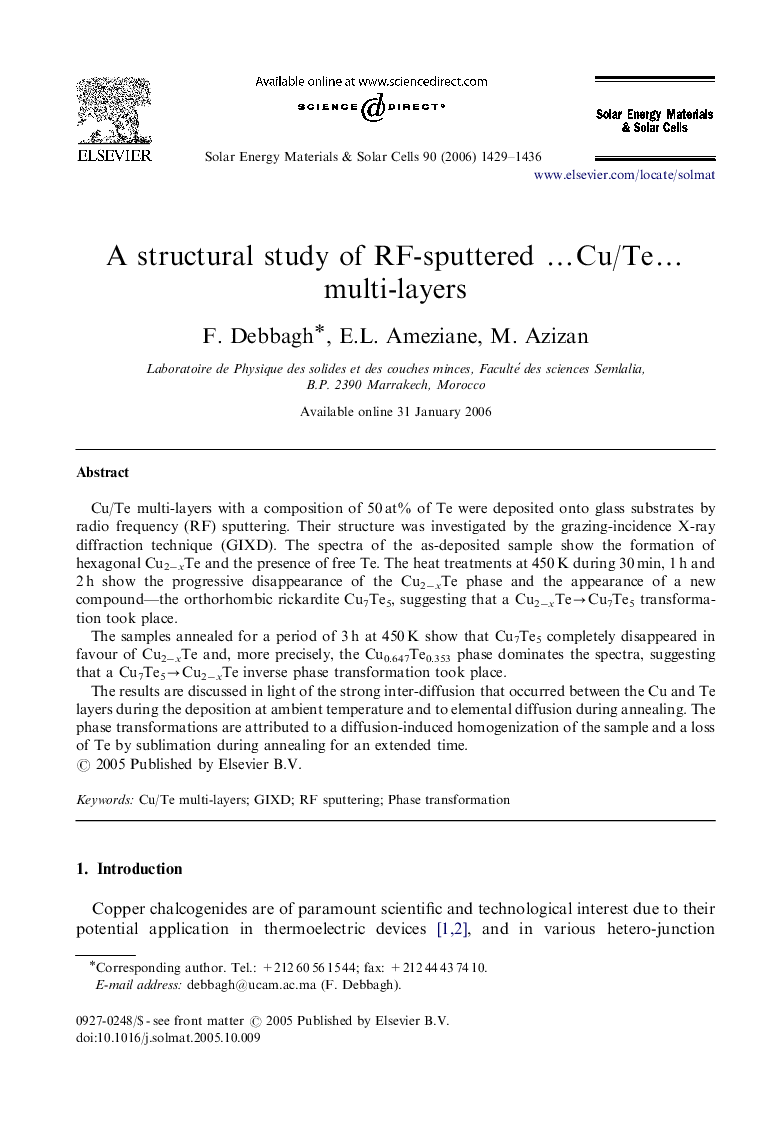| Article ID | Journal | Published Year | Pages | File Type |
|---|---|---|---|---|
| 81256 | Solar Energy Materials and Solar Cells | 2006 | 8 Pages |
Cu/Te multi-layers with a composition of 50 at% of Te were deposited onto glass substrates by radio frequency (RF) sputtering. Their structure was investigated by the grazing-incidence X-ray diffraction technique (GIXD). The spectra of the as-deposited sample show the formation of hexagonal Cu2−xTe and the presence of free Te. The heat treatments at 450 K during 30 min, 1 h and 2 h show the progressive disappearance of the Cu2−xTe phase and the appearance of a new compound—the orthorhombic rickardite Cu7Te5, suggesting that a Cu2−xTe→Cu7Te5 transformation took place.The samples annealed for a period of 3 h at 450 K show that Cu7Te5 completely disappeared in favour of Cu2−xTe and, more precisely, the Cu0.647Te0.353 phase dominates the spectra, suggesting that a Cu7Te5→Cu2−xTe inverse phase transformation took place.The results are discussed in light of the strong inter-diffusion that occurred between the Cu and Te layers during the deposition at ambient temperature and to elemental diffusion during annealing. The phase transformations are attributed to a diffusion-induced homogenization of the sample and a loss of Te by sublimation during annealing for an extended time.
